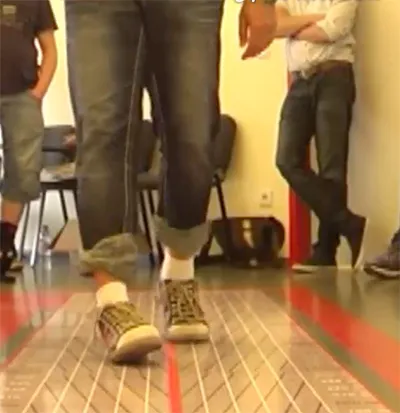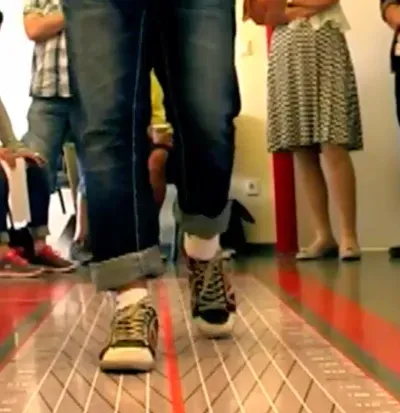THERAPY FOR NEUROPATIENTS
Case example: Sensorimotor insoles after a stroke.
The right step in the right direction or: My almost perfect performance

It has now been an incredible 13 years since I was literally hit. A completely normal day ended in a health disaster. At the age of 29, I would have expected a lot back then, but not a total failure.
It was two cerebral hemorrhages and a cerebral infarction that tore me out of my almost perfect life. As a musician and presenter, my career slowly began to take shape and “on the side” I was also involved in the media world. Family, house – what more could you wish for at a young age...
After about a quarter of a year - I had a four-week coma and early rehabilitation - I came to the sobering realization that I would be more than limited in the future due to my right-sided hemiparesis. In addition, there were coordination disorders and severely weakened motor skills due to the illness. I was able to get out of the wheelchair, but my movement was robotic and leaden. This situation was unbearable for me, especially since it completely changed my everyday life.


A stroke or a cerebral hemorrhage often leads to neurological deficits that limit motor function. A typical characteristic is a foot that tilts towards the outer edge with inadequate control of the foot-lifting muscles. Because the tip of the foot cannot be raised properly, those affected often get stuck, stumble and are unsteady. Sensorimotor insoles can make a good contribution to putting the foot in the correct position and stabilizing the gait.
Countless therapies made me mentally stronger, but my gait hardly changed. Fortunately, I met a very competent team from a medical supply store, which I visited as a prescription. Our journey together began with a comprehensive conversation. It became clear that my gait could be stabilized with just slight corrections. The orthopedic technician had an exciting idea in mind: I should get a sensorimotor footbed. Even though these insoles have been around for a long time, I hadn't heard of them until now. Now such insoles were adapted to my normal shoes and after just a few steps a clear change in my gait was not only noticeable, but also noticeable to me. Since I call the stage my second home, the thought of being able to "perform" with some degree of safety again sparked great excitement.
In everyday life, I alternately wear an orthosis with a sensorimotor footbed or the sensorimotor insoles in a normal shoe. The leg, which for a long time only took unsteady steps, now appears almost normal again. I still have limitations, but the rocky and lengthy path from the wheelchair to a reasonably fluid and, above all, safe gait was worth it, as you can easily see from the comparison videos of the gait analysis.